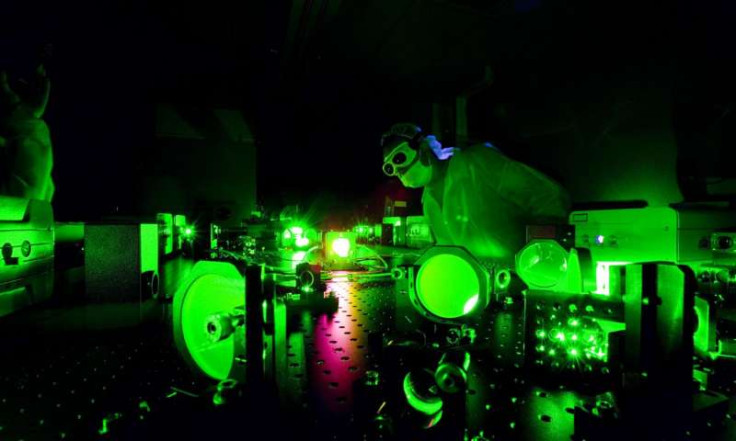Scientists unleash laser 'as bright as a billion Suns'
The images produced by the laser could be used by doctors, physicists and engineers.

Scientists have produced the brightest X-ray laser ever used on Earth. It could be a valuable tool in future experiments involving high-intensity lasers, allowing researchers to come up with extremely high-resolution pictures useful to doctors and engineers.
The laser, used by the team from the University of Nebraska-Lincoln, has a brightness one billion times greater than the surface of the Sun. With it, the physicists have been able to observe changes in the interaction between light and matter.
They measured how particles of light from the laser, photons, scattered from a single electron (a particle with a negative charge of electricity) after striking it.
In a 'normal' setting, when the light from a bulb or the Sun strikes a surface, this scattering of photons by electrons is what makes vision possible. However, electrons normally scatter just one photon of light at a time.
In their experiments with the laser, described in the journal Nature Photonics, the scientists were able to see a very unusual phenomenon, with one electron scattering nearly 1,000 photons at a time.
At the ultra-high intensities produced by the laser, both photons and electron thus behaved very differently to what is normally observed.
"When we have this unimaginably bright light, it turns out that the scattering - this fundamental thing that makes everything visible - fundamentally changes in nature," lead author Donald Umstadter explained. "So it's as if things appear differently as you turn up the brightness of the light, which is not something you normally would experience."
The laser's unique properties
The unique properties of that X-ray laser are very interesting because they may have a number of applications. Its extreme but narrow range of energy, combined with its extraordinarily short duration, could indeed help generate very high-resolution three-dimensional images.
This kind of imagery would be very useful to doctors as they could help them identify tumours or microfractures that elude conventional X-rays.
Engineers could also benefit as the laser could be used to map the molecular landscapes of nanoscopic materials found in semiconductor technology, or detect increasingly sophisticated threats at security checkpoints. As for physicists, they could use it to capture extremely detailed snapshots of electron motion or chemical reactions.
© Copyright IBTimes 2025. All rights reserved.






















